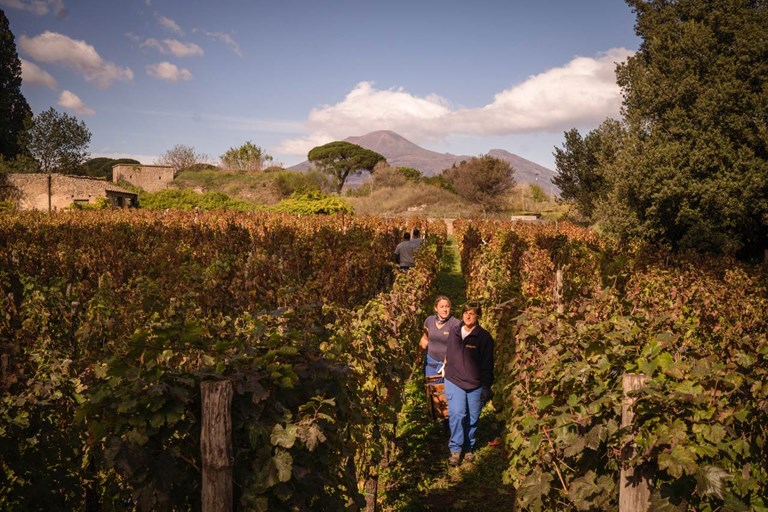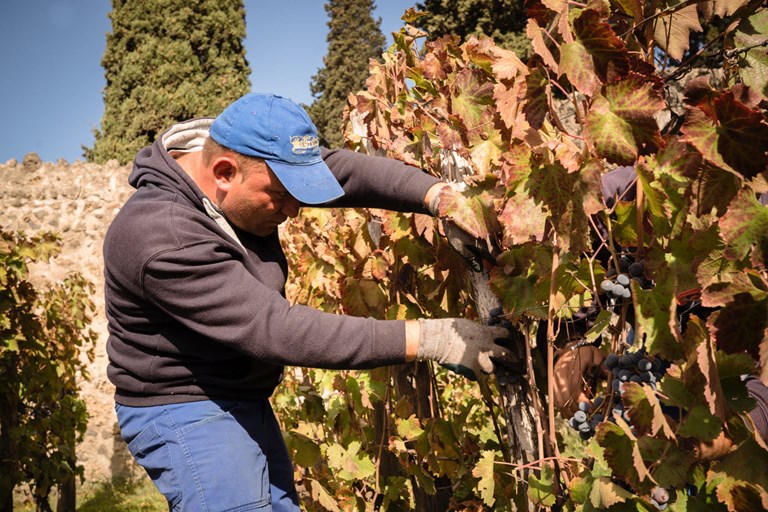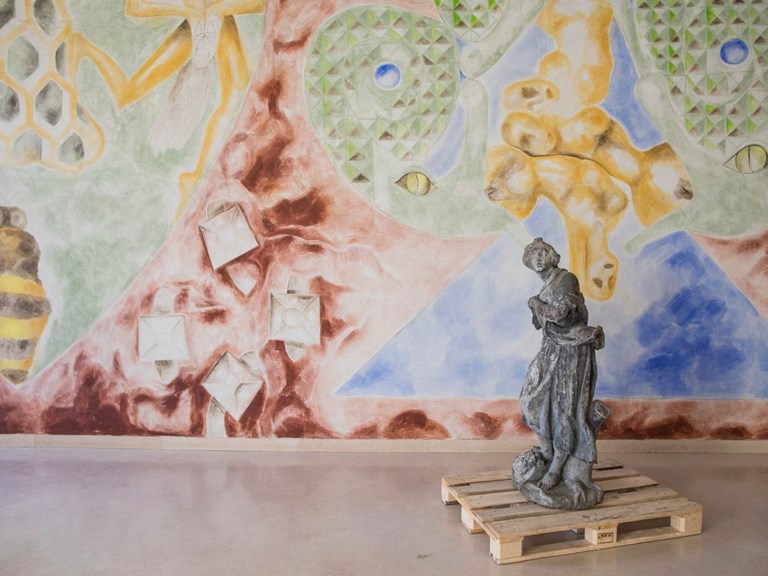IN VINO VERITAS
09.11.2017 NAPLES & AROUND
The harvest is the twentieth to be held since winemaking inside the Pompeii archaeological area was revived thanks to a project launched in 1994 by the state-run heritage body that manages the site, Parco Archeologico di Pompei.
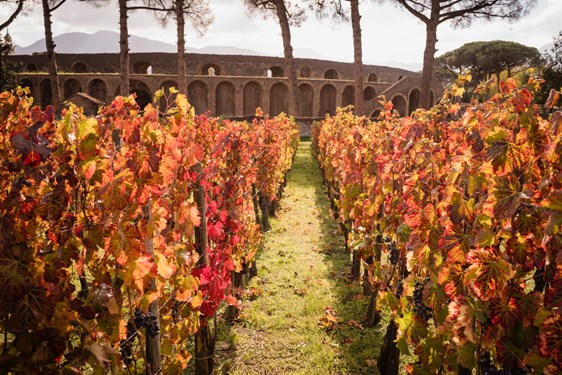
View
Evidence of the ritual and convivial use of wine in Pompeii can be traced back to at least the seventh century BC. Analysis of soil, organic remains and land use enabled researchers to identify the gardens and smallholdings that would have been planted with vines before the devastating eruption of 79 AD. Two Regiones, or city districts, were earmarked for replanting in the south-eastern quadrant of Italy’s most celebrated ancient site. The initial phase of the project saw the planting of eight grape varieties that are known to have been cultivated by the Ancient Romans in southern Italy.
In 1999, leading Campanian winery Mastroberardino was brought on board as the operational partner of a project which would soon extend to 12 separate vineyards within Regiones I and II. After experimenting with a number of different vine training types documented by ancient authors and iconography, the Hellenic ‘alberello’ or ‘bush-trained’ vine system was settled on, with different plots charting the evolution of what was probably the very first vine cultivation model used by mankind, from low self-supporting bushes to higher ‘Christmas tree’ cones supported by wooden stakes.
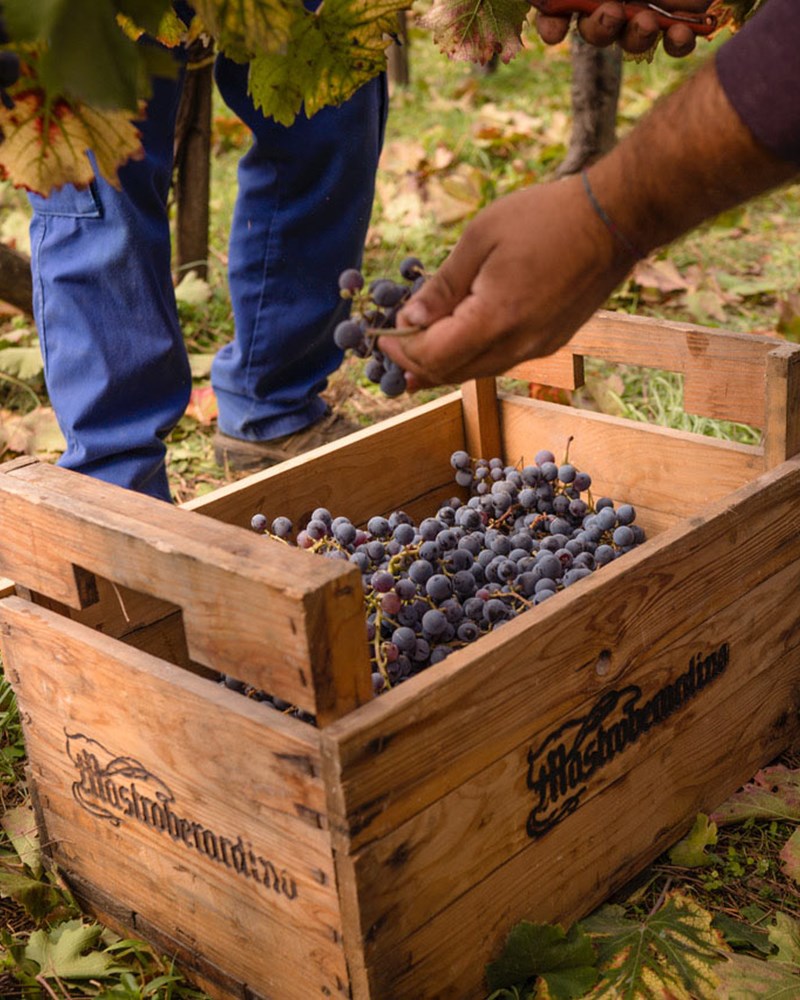
According to Massimo Osanna, General Director of the Parco Archeologico di Pompeii, “the data that is emerging from this groundbreaking public-private joint venture is allowing us to understand more about grape cultivation and winemaking in ancient times”. Under the direction of bio-archeologist Alberta Martellone, the site’s Applied Research Laboratory is currently analysing wine-related artefacts from Pompeii, including the organic residue of clay amphorae and jars. “We’re learning not only about how wine was used in Roman Pompeii, and the different varieties”, explains Osanna, "but what was added to it - there’s an extraordinary herbarium of plants and flavorings like honey that was mixed in not only to make the wine more tasty, but also for ritual and religious purposes”.
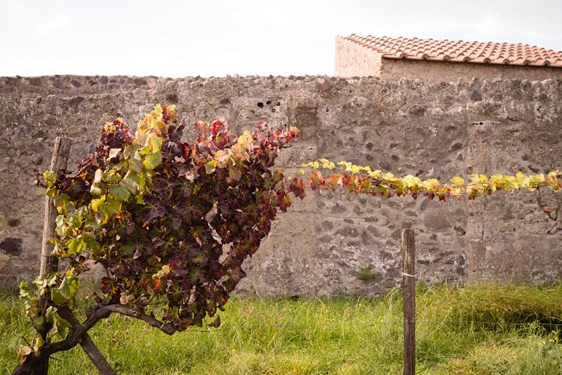
View
From summer 2018, once ongoing work to stabilise and restore the insulae (city blocks) of Regiones I and II is finished, visitors to Pompeii will be allowed access to certain vineyards, which until now have been open only to archaeologists and Mastroberardino staff. Standing in a shady walled vineyard, listening to the buzz of insects and birdsong, with Mount Vesuvius framed in the distance, is about as close as it comes to experiencing Pompeii like a two-thousand-year-old local.
Parco Archeologico di Pompei: www.pompeiisites.org
Mastroberardino wines: www.mastroberardino.com
Photos © Roberto Salomone
Le Sirenuse Newsletter
Stay up to date
Sign up to our newsletter for regular updates on Amalfi Coast stories, events, recipes and glorious sunsets
